Valdemar II
Banned
http://www.landships.freeservers.com/burstyn_tank.htm
What if the Austrian build some of these "landships" before WWI. What effect would it have on the war?
Personal they look rather well adapted to trench warfare, of course the Austrians wasn't at many trench warfare fronts, but German observers will likely discover these units success against defenders rather fast and buy some from Austria. Whether it's going to change anything are the question, but even small benefits may be enough to improve the German position to a large degree.

An Austrian army officer, k.u.k Genie-Oberleutenant Günther Burstyn (born on 6/7 1879 in Bad Aussee, Steiermark, and dead 15/4 1945 in Korneuburg, Niederösterreich) inspired by the sight of the American Holt agricultural tractor with crawler tracks, designed a small tracked vehicle, which he called a Motorgeschütz (motor-gun), built it in model form, and sent this and the design to the Austrian War Office in October 1911. Had it been built the vehicle would have been 3.5m long, 1.9m wide and 1.9m high. Cross-country speed would have been about 8 km/h, road speed 29 km/h. It would be propelled by a 60HP Truck Engine. The four subsidiary wheels, two at each end on arms, could be lowered as required, the rear pair being driven as an aid to traction and the front pair, which could be pivoted, being intended for steering. It was supposed to have an armament of a small calibre fast fire gun (30-40mm calibre). Its tactical use would be close support of Infantry Attacks, for suppression of enemy MG's, and also frontal attacks against enemy artillery positions.
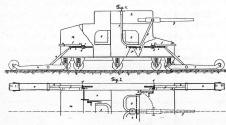
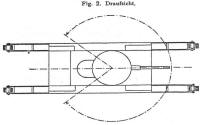
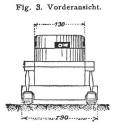
The Austro-Hungarian War Office returned the designs to Burstyn saying they might be interested if a commercial firm could build it: Burstyn had no industrial contacts and so let the matter drop. Also, the War Office declined to finance any further work. Meanwhile the German War Department asked to see the design, but were not enthusiastic even though a leading German military periodical keenly endorsed the idea. A further complication arose when Burstyn in 1912 sought to patent the design and was told that this could not be granted as it infringed existing patents, including those for agricultural tractors. (He eventually was granted a patent, no Zl. 252 815 DRP.) Thus discouraged, Burstyn allowed the idea to drop, and it never progressed beyond paper.
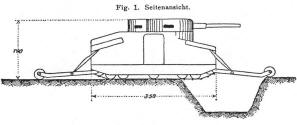
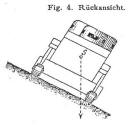
What if the Austrian build some of these "landships" before WWI. What effect would it have on the war?
Personal they look rather well adapted to trench warfare, of course the Austrians wasn't at many trench warfare fronts, but German observers will likely discover these units success against defenders rather fast and buy some from Austria. Whether it's going to change anything are the question, but even small benefits may be enough to improve the German position to a large degree.